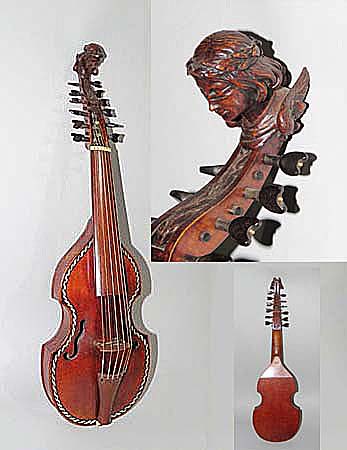
Owner: HWMC
Catalog#: 2CL-CHLT-103
Violin Family
Viola d'amore - Italian
Milan, Italy
European
Wood, gut strings, pearl, bone
ca. 1750s
Length: 14.5 in (Back)
Strings – Lutes – Violin Family
A Viola d’Amore, labeled Petrus Io. Fratresq./Mantegatia Mediolani/in Via S. Margarite.
The viola d’amore shares many features of the viol family, a bowed box-lute chordophone of Renaissance Europe. This viola d’amore has six sympathic strings below the main strings and fingerboard, which are not directly played, and six playing strings above them. Like all viols, this viola d’amore has a flat back.
An intricately carved head of a blindfold cupid with wings is at the top of the peg box, representing the blindness of love. The sound-holes are in the shape of a flaming sword known as “The Flaming Sword of Islam” (suggesting the instrument’s development was influenced by the Islamic World). This was one of the three usual sound hole shapes for viols as well. It is unfretted and played much like a violin, being held horizontally under the chin. Unlike most, this one is about the same size as the modern violin and not the viola. The first unambiguous reference to a viola d’amore with sympathetic strings does not occur until the 1730s.
Resource: https://omeka-s.grinnell.edu/s/MusicalInstruments/item/638
